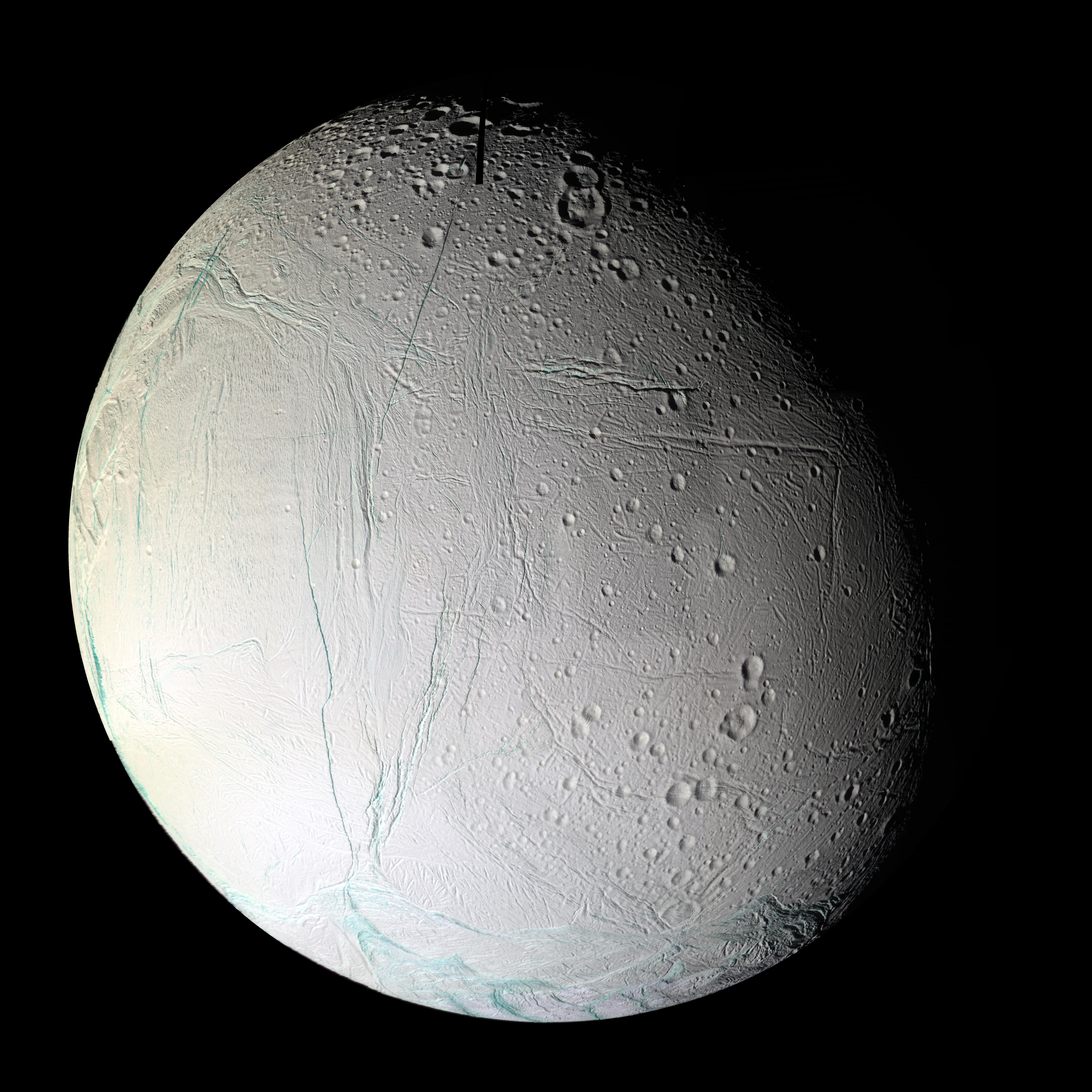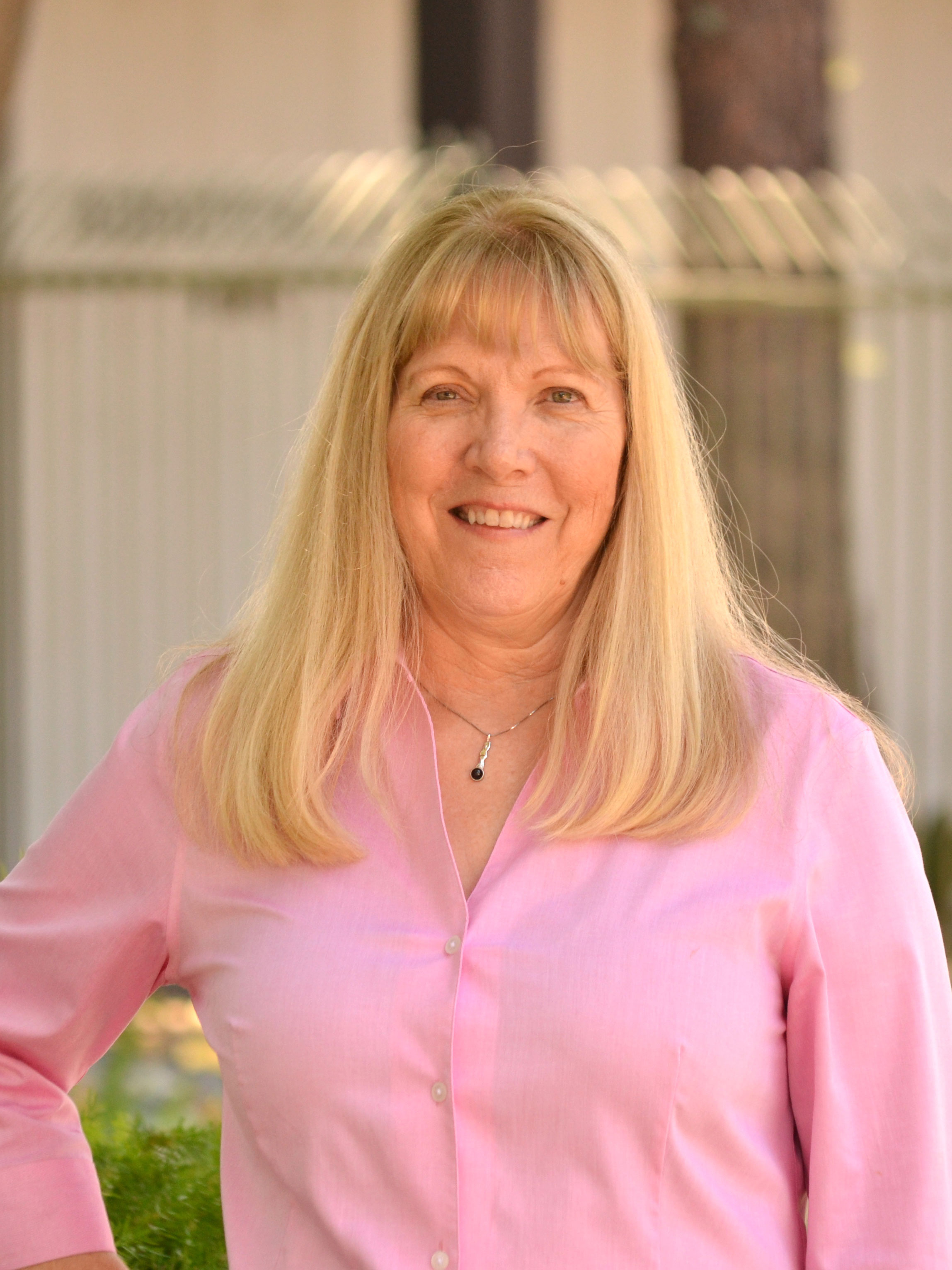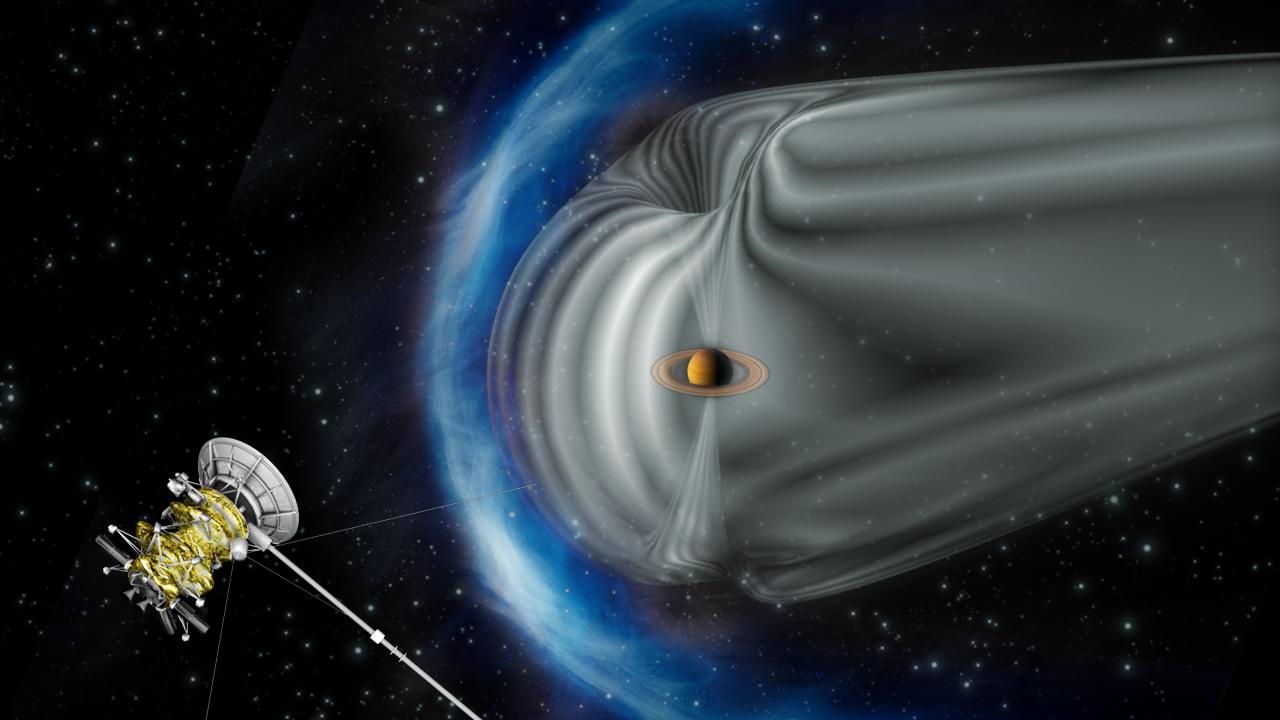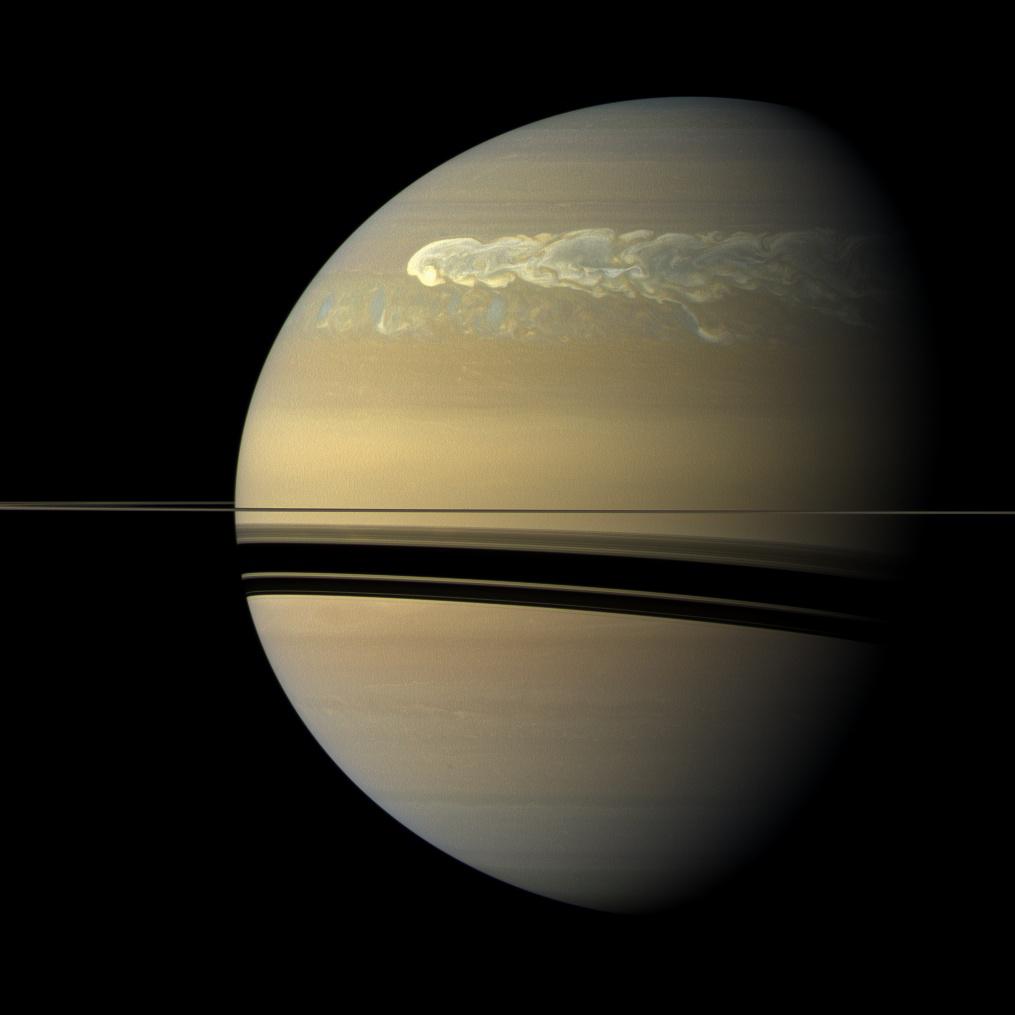Gravity Assist Podcast: Saturn, with Linda Spilker

The Gravity Assist Podcast is hosted by NASA's Director of Planetary Science, Jim Green, who each week talks to some of the greatest planetary scientists on the planet, giving a guided tour through the Solar System and beyond in the process. This week, he is joined by Cassini Project Scientist Linda Spilker, who talks about the ringed planet Saturn, which is the sixth planet from the Sun, as well as its fascinating moons and the most startling discoveries from NASA's Cassini mission.
You can listen to the full podcast here, or read the transcript below.
Jim Green: As everyone knows, the Cassini mission recently had a spectacular finale at Saturn. So, Linda, have you caught up on your sleep, and what's happening next to all the Cassini data? [See Where the Cassini Spacecraft Crashed into Saturn (Photos)]
Linda Spilker: Well, yes, I have caught up on my sleep, Jim, a little bit, and I actually took a vacation. Of course, the scientists are so busy looking at their data, because in almost every area, what we found surprised us. Our models just didn't explain what we're now seeing in the data. It's incredible.
Jim Green: What in your mind were some of the most startling discoveries from Cassini?
Linda Spilker: Well, with Cassini, probably one of the most startling discoveries was to find actual geysers coming out of four fractures at the south pole of the tiny moon Enceladus, which is only 300 miles across [313 miles to be precise, or 504km]. We thought it should be frozen solid, and yet we had tantalizing& clues from Voyager that this bright, icy moon, with not many craters [was active]. It's right in the middle of Saturn's E-ring, and there's the geysers, and a global ocean of liquid water underneath Enceladus' icy crust, that that ocean is salty and has organics and other key ingredients that might make it possible for life to exist in that ocean. [There could] even be hydrothermal vents on the sea floor. We found tiny nano-silica grains [in the geyser plumes] that could only grow in very hot water and excessive hydrogen, and these clues point to hydrothermal vents.
On Earth, we have life teeming around these vents deep in the Earth's sea floor, far away from sunlight. So, we wonder, could there possibly be life on Enceladus?
Breaking space news, the latest updates on rocket launches, skywatching events and more!
Then, of course, there is giant Titan: the size of the planet Mercury with a thick nitrogen-rich atmosphere. [The European Space Agency] landed a probe called Huygens on the surface of Titan and unveiled this moon that was covered with photochemical haze, like Los Angeles on a smoggy day, [which prevented us from] seeing through to the surface with Voyager. But, with Huygens, we could see the surface, river channels, and icy rounded pebbles. It turns out that liquid methane plays the same role on Titan that water plays on the Earth. There are methane clouds, methane rain, methane flowing through river channels, filling lakes and seas and, hey, you know, could there be something very unusual going on in those methane seas on Titan?
And Titan has a global ocean if liquid water of its own underneath its icy crust, so there are two ocean worlds at Saturn — what a remarkable discovery.
Jim Green: What are some of your favorite moons?
Linda Spilker: Well, of course I like Enceladus because it's so interesting with its global ocean, but also there is Iapetus, which has one bright side and one dark side, and over the course of the Cassini mission [we] found that the dark material is actually dust from Phoebe, which is a moon captured by Saturn and located far away from the planet, where it is bombarded by micrometeorites, [which produces dust] and that dust comes in and gives Iapetus a dark side.
Then how about Mimas, with that giant crater called Herschel, and if you look at where electrons hit the surface of Mimas and cause the icy particles to fuse together so it heats up and cools off more slowly, [it produces] a very interesting temperature map of Mimas, which has a lens shape where the electrons hit and it looks like a Pac-Man, ready to gobble up something else as it goes along.
Jim Green: Saturn has just been so spectacular, and of course its rings are just such an attraction for us. What have we learned about the rings from Cassini?
Linda Spilker: Well, in the Voyager days — I worked on Voyager — we had this idea that the rings were individual particles gently colliding with one another and that there were these waves in the rings created by interactions or resonance with the moons. But, with Cassini, we've unveiled the rings in a totally different way, that many of these particles stick together and form long linear clumps in the rings, and that these clumps form and break apart and form again, and that most of the rings are made up of these very interesting clumps. During Saturn's equinox [in 2009, when the rings were edge-on to the Sun] Cassini saw three-dimensional structures in the rings, that these rings are 30 feet thick, perhaps even three feet thick in places, and that these larger [clumps] that may be half-a-mile or a mile across stick up above and below the rings like giant icebergs. We saw their shadows when the Sun was edge on to the rings, it just saw incredibly fascinating to watch this in action.
Then there are the propeller objects, which are these large particles that are not quite big enough to open up a gap in the rings. We have two gaps in the rings that are created by moons, but these are not quite big enough, so it looks like two arms of an old fashioned propeller. Or on the outer edge of the A-Ring there was this bright feature that pointed to an object that was large enough to get a nickname — Peggy — and that perhaps Peggy was forming and might break free of the rings and become a moonlet in her own right.
Jim Green: One of the really great images that I remember so well is the eclipse where Saturn passes between the spacecraft and the Sun. We've just had a [total solar] eclipse here in the United States and so many people understand that basic concept. But, when we're out in space and we have objects like Saturn moving in front of us, gobbling up the whole Sun, the rings just pop out. And we discovered some new things. What did we find?
Linda Spilker: That's one of my very favorite pictures, Jim, because you can see all of Saturn's rings in that particular image, and since the Sun was covered up, we could take our cameras and spectrometers and look very close to Saturn, at very high phase angles, and we discovered that many of the tiny moons have rings in their own right. And so, if you have a tiny moon, particles get thrown off and create rings. We discovered a number of new rings in that particular image.
Jim Green: What I really loved about the proximal orbits, when Cassini went between the rings [and Saturn], is that there doesn't seem to be a lot of material falling out of the rings, but yet the rings have got to be dissipating somehow or another. What do you think is happening?
Linda Spilker: Well, Jim, one of the most amazing surprises, and it was good for Cassini, is that in that gap between the rings and Saturn, the particles are just tiny nano-grains — in other words, it was very safe for Cassini to dive through that gap. But we were surprised. We were expecting that ring particles of all sizes, from the nano-grains to micron-sized to perhaps even half-a-centimeter across might all be in that gap. So what happened to those particles? What processes grind them up and remove a lot of the water-ice to leave just these little dust-sized or smoke-sized grains inside of that gap, and then how do they fall into the planet? These nano-grains seem to be distributed above and below that equatorial plane of the rings. We've been mapping their distribution, but that's a puzzle. What happened to the big particles?
Jim Green: Does that tell us that the rings will last a very long time around Saturn?
Linda Spilker: The rings might last for a longer time, but there's still some process [happening] because those ring particles we know are gradually flowing towards Saturn, like pouring water on a table. There's nothing to stop that. But what is grinding them up, or what process is holding the bigger ones in place? If something is [holding them in place], then perhaps the rings could last longer than a mere 100 million years.
Jim Green: Several of those [images of Saturn eclipsing the Sun] actually have Earth and Mars and Venus just on the other side of the solar system where the Sun is illuminating them.
Linda Spilker: Yeah, and one of those pictures where you can see Mars, Venus, the Earth and the Moon, I love it because we asked all the people here on Earth to go out, wave at Saturn during that 20-minute window [when Cassini would be looking at Earth] so that the photons from their waves could be captured by the Cassini cameras, and then we asked people to send us their selfies of themselves waving at Saturn. We took all those pictures and recreated that mosaic out of people pictures.
Jim Green: The recent observations of the rings from a new perspective, during the proximal orbits where we flew just below the rings and above the atmosphere, gave us some new information about the mass of the rings. What can you tell us?
Linda Spilker: Well, in that gap between the rings and Saturn, we could make very precise measurements of Saturn's gravity and of its mass. Then we had information from outside the rings in Saturn. So, we could take the difference between the two and get the mass of the rings. It's turning out to be trickier than we thought because Saturn's gravity and its mass distribution is not at all what our models predicted, they're very different and Saturn is very different from Jupiter in this regard.
So, we're trying to figure out Saturn's gravity and mass first. We have a mass for the rings. It looks like it's a little bit less than we expected, which means the rings might be a little bit younger. But, the error bars are huge. So, we still don't have a very precise number and we're trying to work hard to calibrate the data, get the best orbits to fit all of it together and understand Saturn first, take out Saturn and then get the mass of the rings.
Jim Green: Saturn has some really spectacular features, in particular the hexagon in the north polar region, which is just absolutely astounding. What do we know about that?
Linda Spilker: Well, that giant hexagon at the north pole is a six-sided jet stream. You could put two Earths across it, so it's huge in size. We're not quite sure what keeps those six sides in place. But, we have got some great images [of the hexagon] in these grand finale orbits and we're working hard to model what could keep that hexagon in place.
Saturn's very beautiful and it's very interesting how the seasons change there. When it was winter in the northern hemisphere when we first arrived, the northern hemisphere of Saturn looked blue — almost a Neptune kind of a blue — because those haze particles [in the atmosphere] had basically disappeared. The haze particles need sunlight to grow. And so, we could see deeper into the atmosphere beneath the long shadows cast by the rings.
As the seasons changed, slowly, the northern hemisphere became more and more golden as the haze came back, and now the southern hemisphere is turning bluer and bluer as it's winter now there.
Jim Green: One of the spectacular atmospheric features that Saturn displayed to us was the huge storm that occurred. Cassini's 'Waves' instrument, which was measuring the electromagnetic radiation from lightning, saw many lightning strikes over long periods of time from the storm. What do we think is happening at Saturn during these huge storms?
Linda Spilker: Those lightning strikes were 10 times or more stronger than the lightning strikes on the Earth. And these storms only happen about once every 30 years. This one came a little bit early in the northern hemisphere, and so Cassini was right there with a chance to watch over nine months as that storm grew, completely circled around the planet, the head and the tail of the storm met, and then it slowly started to disappear. So, we think Saturn builds up energy over a period of time, and about once every Saturn orbit, which is 29.5 years, there's this tremendous release of energy. Some people even call it a 'burp' where the energy comes out and creates a giant storm. After which the planet becomes quieter again with just the usual small storms.
Jim Green: Another thing that always fascinated me about Saturn — and as you know, I'm a magnetospheric physicist — is its magnetic field and the fact that we've measured it for 13 years in orbit, and we've found out all kinds of spectacular things. Can you give us an update on what's happening in that area?
Linda Spilker: It's so fascinating because we think that, to sustain a magnetic field, the planet needs to have a tipped magnetic axis — in other words, the magnetic field axis should be tipped over [relative to the spin axis]. If you look at the Earth, if you look at Jupiter, Uranus and Neptune, all of those have tilted magnetic fields. But Saturn is unusual. It looks like it is to within about 0.6 degrees, those two rotation axes are perfectly lined up. That's a puzzle because we think that you need that tilt to maintain the currents inside the metallic hydrogen deep inside Saturn [where the magnetic field is generated].
So maybe, just maybe, we're watching a magnetic field slowly become extinct on Saturn, or maybe something that we haven't thought of yet is hiding or masking the magnetic field and what we see just looks like a very well lined up dipole. So, we're not sure. We're continuing to study it and tease out that those two axes appear to be getting closer and closer aligned as we go deeper into the data.
Jim Green: One of the things that these magnetic fields produce is a lot of radio emission, and it's from this radio emission hat we can get an idea as to the length of a day on Saturn. With the orientation of that field being so closely aligned to the axis, that's been hard to do. What's the latest on that?
Linda Spilker: Usually we can take the tilt from the axis and look at the wobble in the field to get the rotation for the interior of the planet. That's what we did at Jupiter. And at Saturn we found this radiation, called Saturn kilometric radiation [the radio emissions] and it had a period, and we thought that was the internal rotation rate of Saturn. But, as Cassini studied it in more detail, we found two periods, one in the north and one in the south, and realized that these periods were quite different from what Voyager found and that they weren't tied to the interior of the planet but to something else on the outside, maybe to the auroral regions.
And so, now we're still looking for even a tiny offset and a tiny wobble, and it'll take just a little bit more time to see if we can tease that out.
Jim Green: When you think about it, i's so important for us to be able to create a coordinate system on Jupiter that rotates and allows us to identify certain features and then determine how they move within that coordinate system. So, by not having an accurate day, that must make the data analysis really hard.
Linda Spilker: It makes it hard, too, for the atmospheric scientists because they don't know exactly how fast the winds are rotating. At different latitudes, the winds rotate at different speeds, and trying to understand how Saturn works has gotten a little bit harder.
Jim Green: One of the things that you and I recently worked on is an& e-book. Can you tell us about that?
Linda Spilker: The e-book is beautiful. It's all of these pictures from Cassini. It's like a walk down memory lane now that the mission is over and a chance to experience not only the incredible science from Cassini but the beauty in the pictures that Cassini sent back.
Jim Green: Where can we get the e-book?
Linda Spilker: The Cassini e-book can be downloaded from NASA.gov/ebooks, and it can be downloaded in any format.
Jim Green: For every one of my guests, I ask a very special question, and it's really all about how we as individual scientists got into the field. So Linda, what was your gravity assist that drew you onto this path to become a scientist?
Linda Spilker: Well, Jim, my gravity assist really happened all the way back when I was working on my bachelor's degree. I was a physics major, and there was one woman professor in the department. Her name was Dotty Woolum, and she asked me, "Would you like to work with me over the summer and do some research on meteorites?" She was trying to understand lead and bismuth distribution and carbonaceous chondrites, and so I said, sure, I'll help out. I actually got to go up to Caltech and stay in the dorms for a couple of summers, and I loved that research and learning more about how our Solar System might have formed.
So when I graduated, there came a chance to get a job at JPL, and they asked me whether I wanted to work on Voyager and to look at the outer planets. I said, sure, sign me up. But, my gravity assist was really with Dotty Woolum in physics teaching me about meteorites and about the Solar System.
This story was provided by Astrobiology Magazine, a web-based publication sponsored by the NASA astrobiology program. This version of the story published on Space.com. Follow us @Spacedotcom, Facebook or Google+.

The National Aeronautics and Space Administration (NASA) is the U.S. government agency in charge of the civilian space program as well as aeronautics and aerospace research. Founded in 1958, NASA is a civilian space agency aimed at exploring the universe with space telescopes, satellites, robotic spacecraft, astronauts and more. The space agency has 10 major centers based across the U.S. and launches robotic and crewed missions from the Kennedy Space Center in Cape Canaveral Florida. Its astronaut corps is based at the Johnson Space Center in Houston. To follow NASA's latest mission, follow the space agency on Twitter or any other social channel, visit: nasa.gov.








